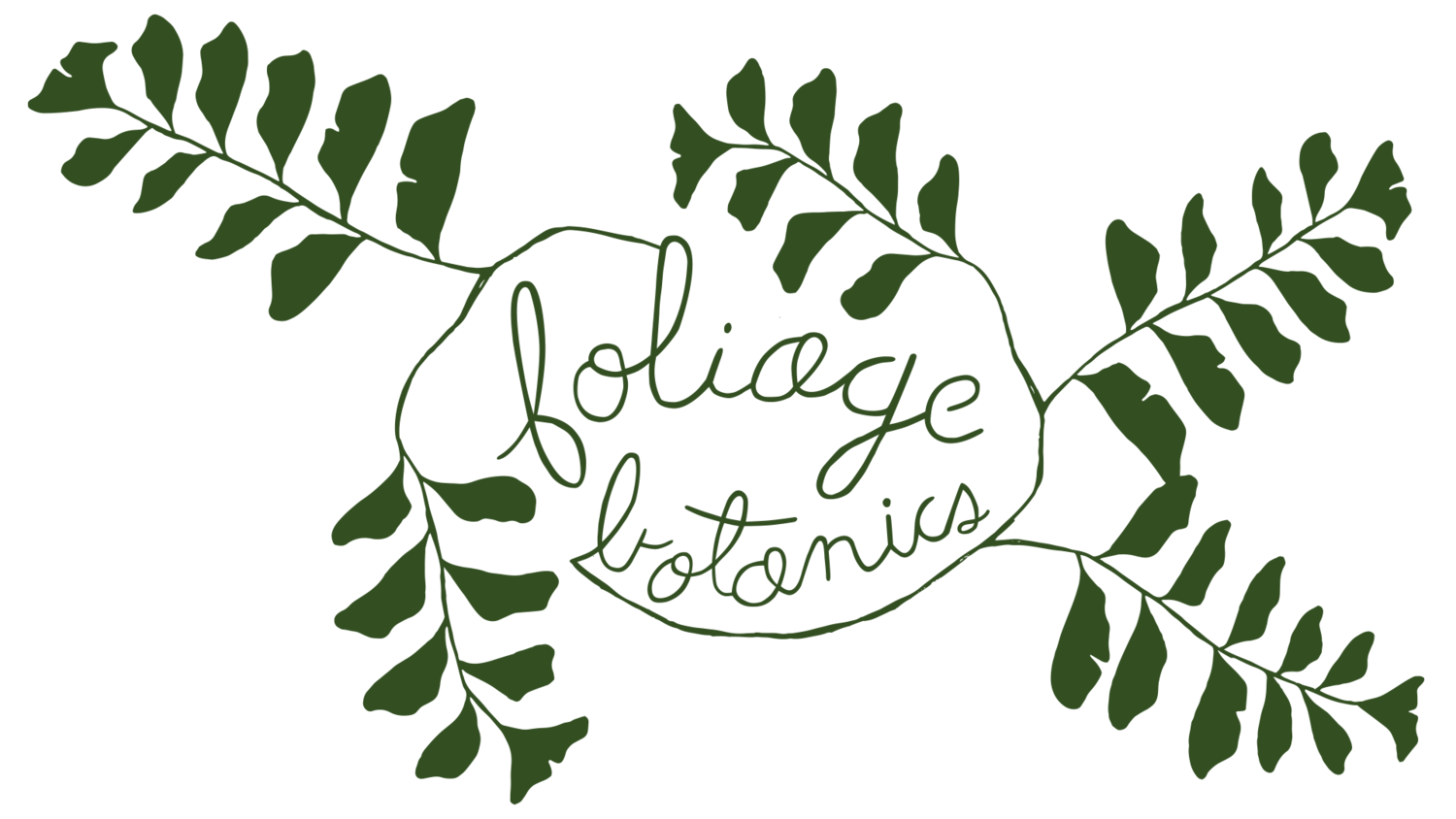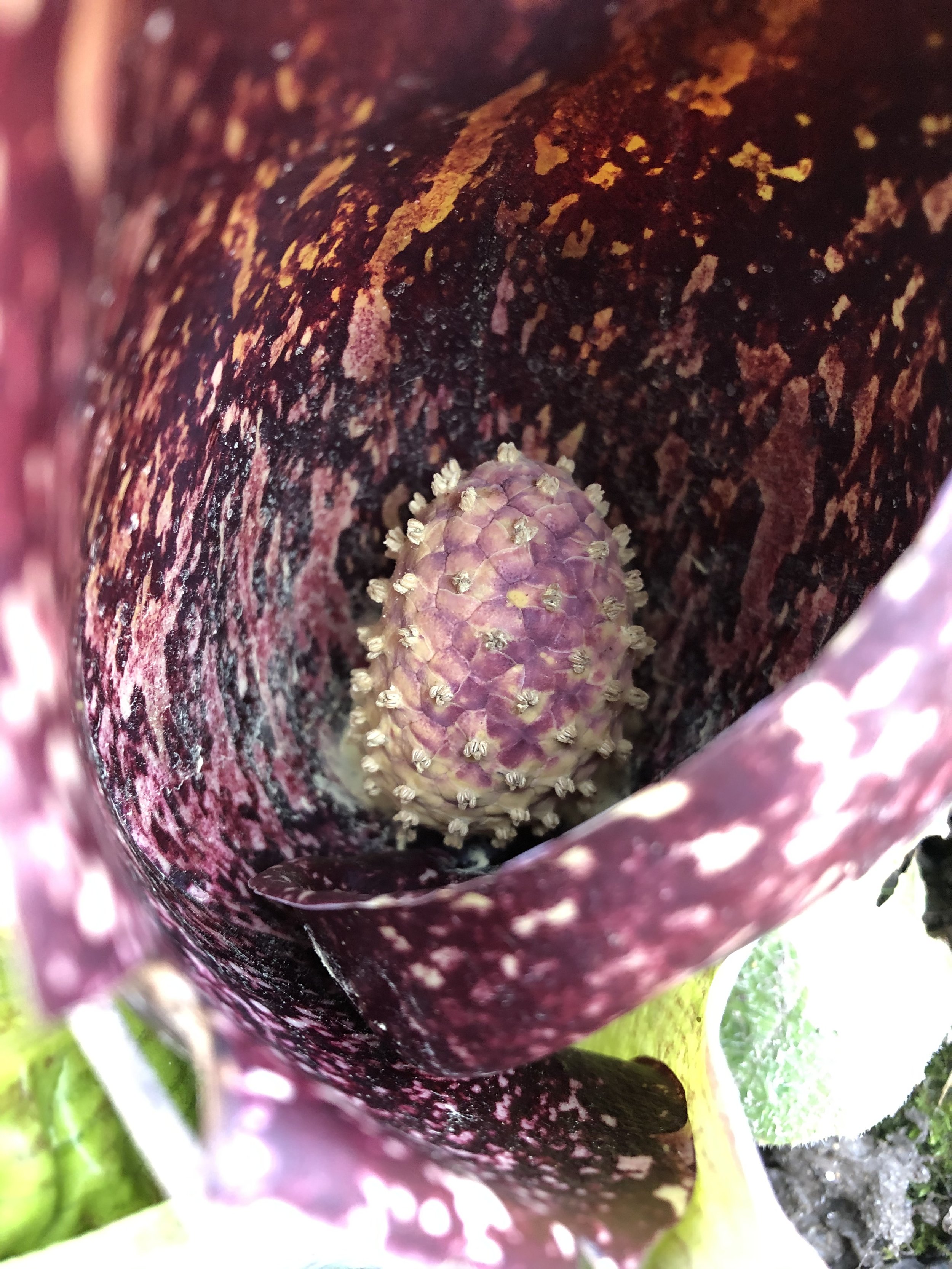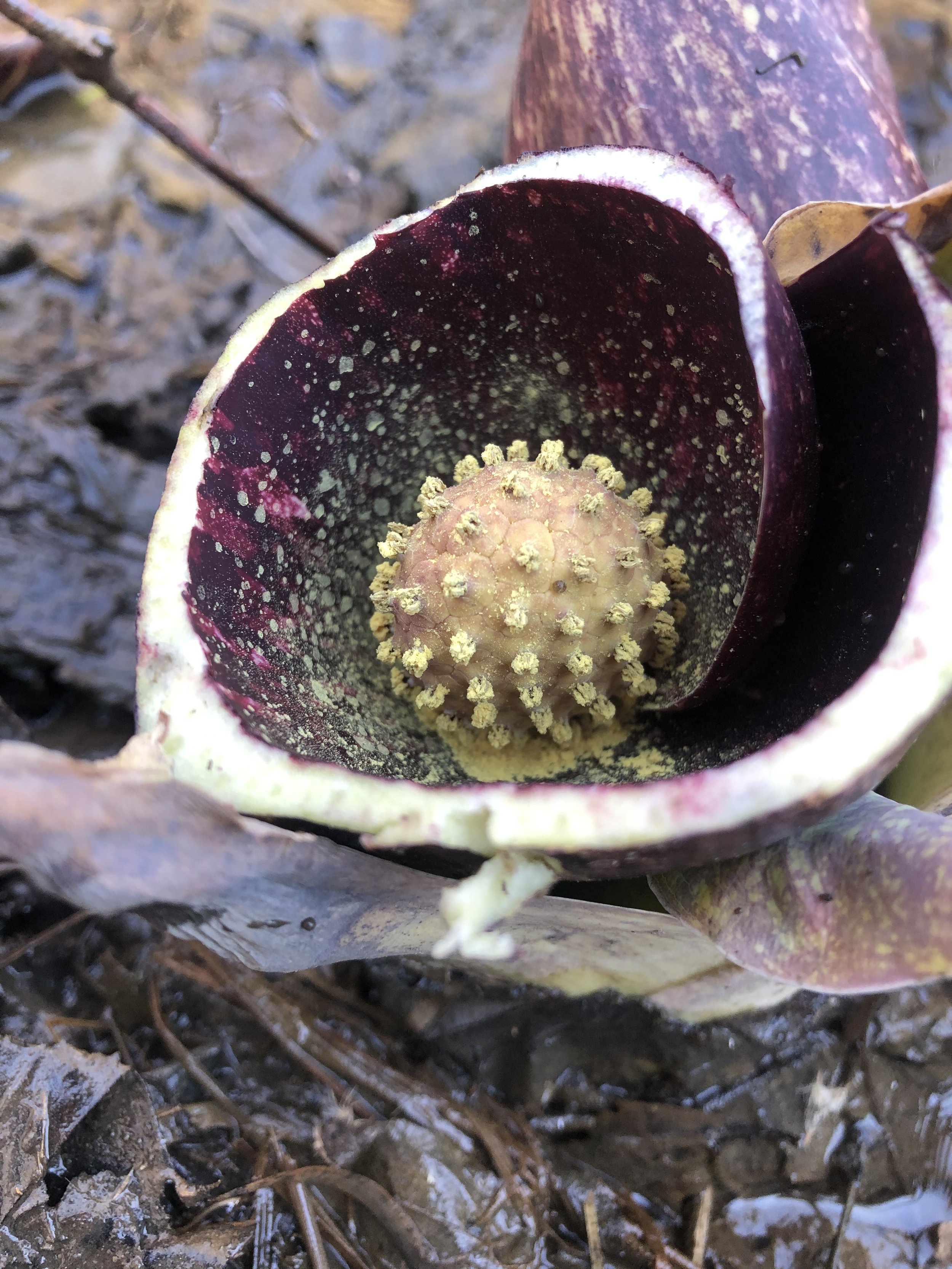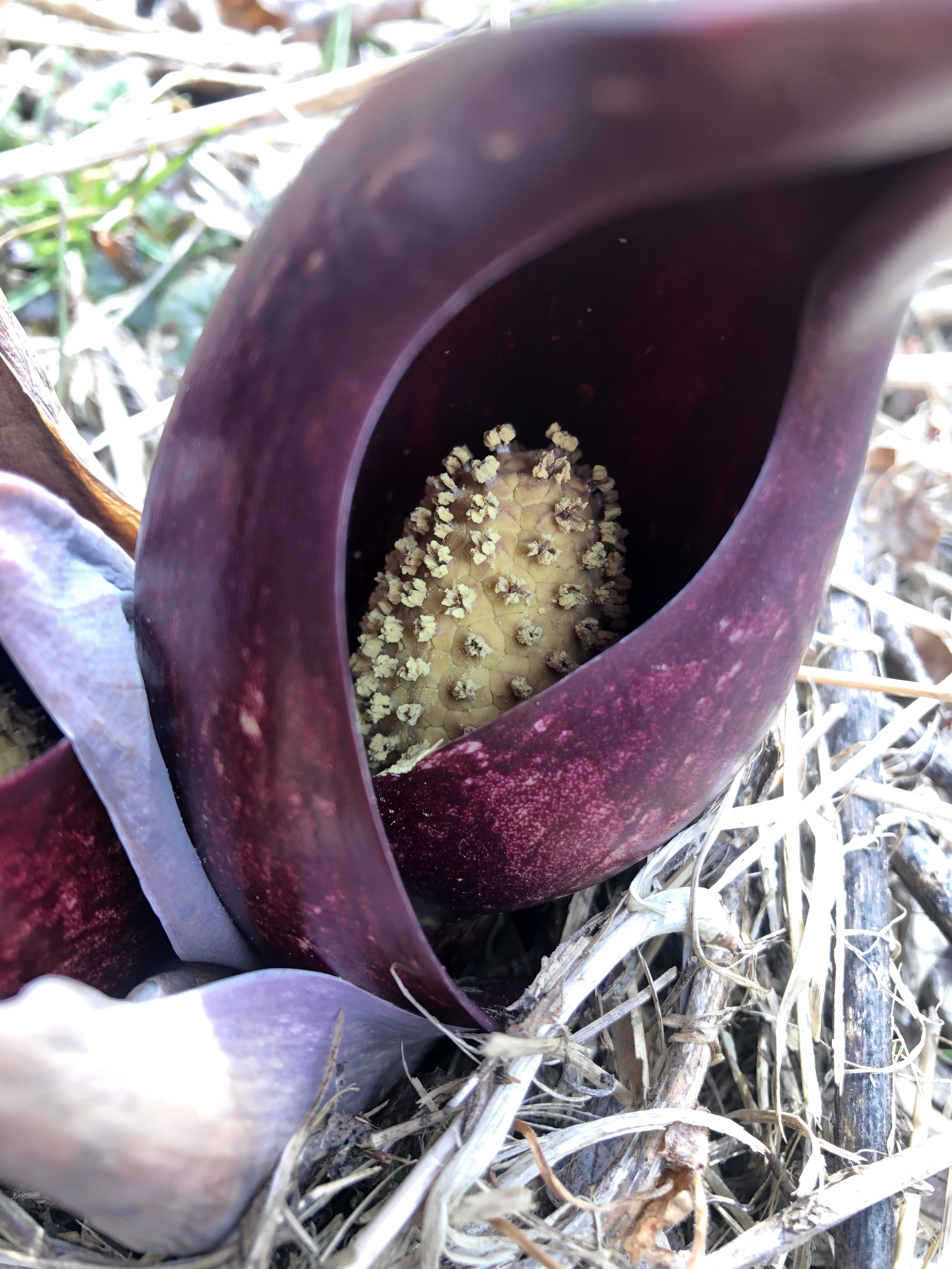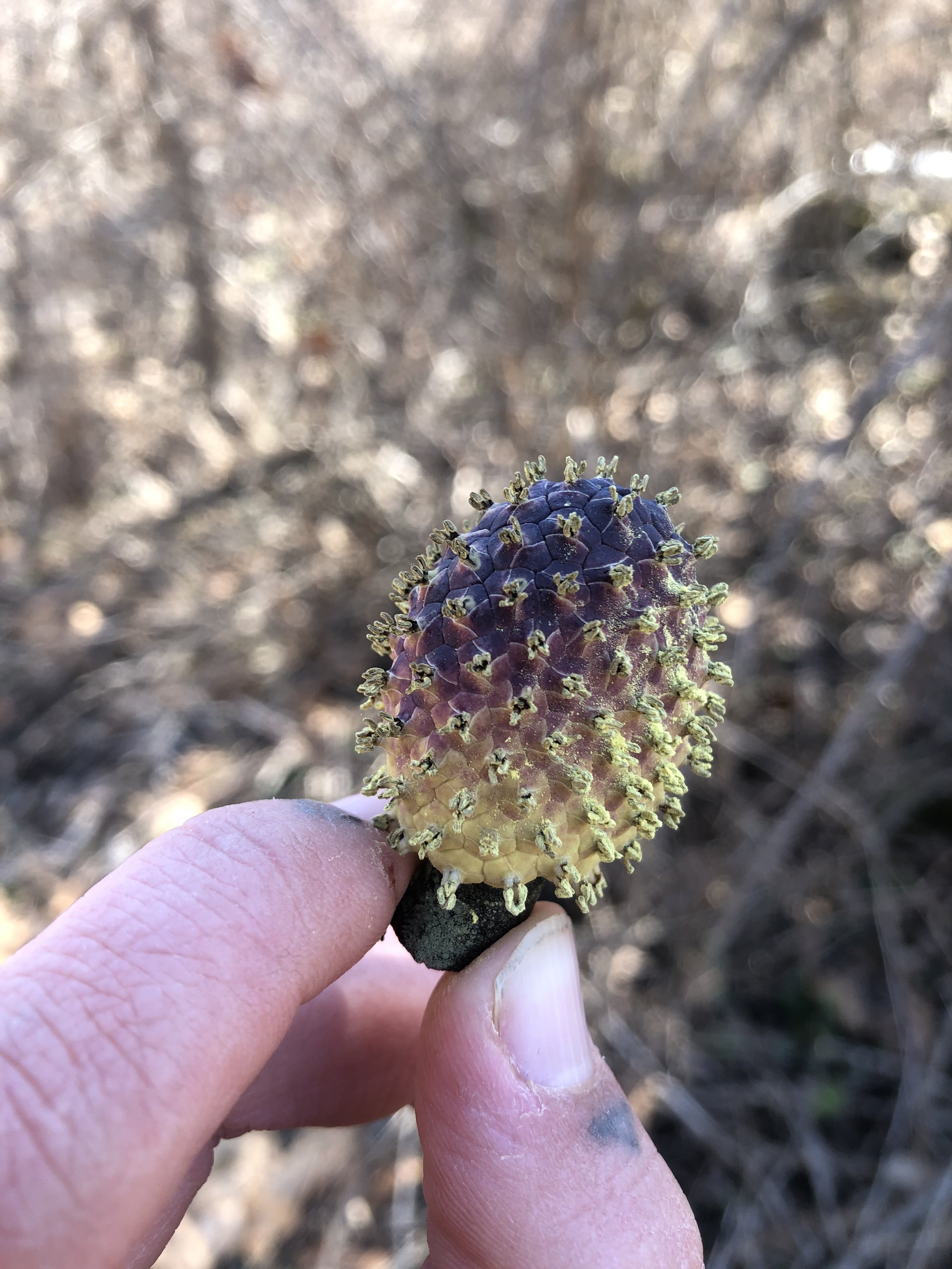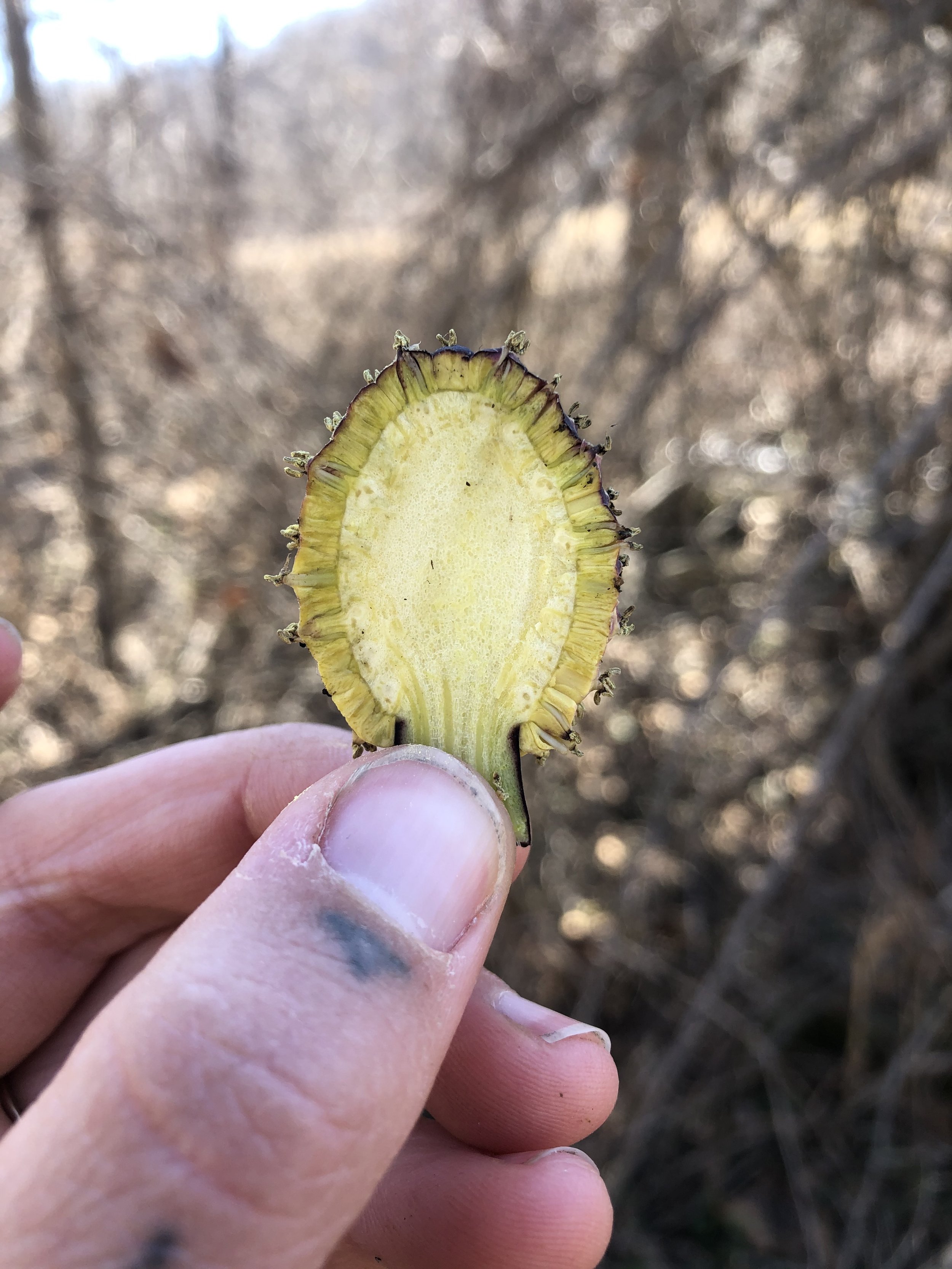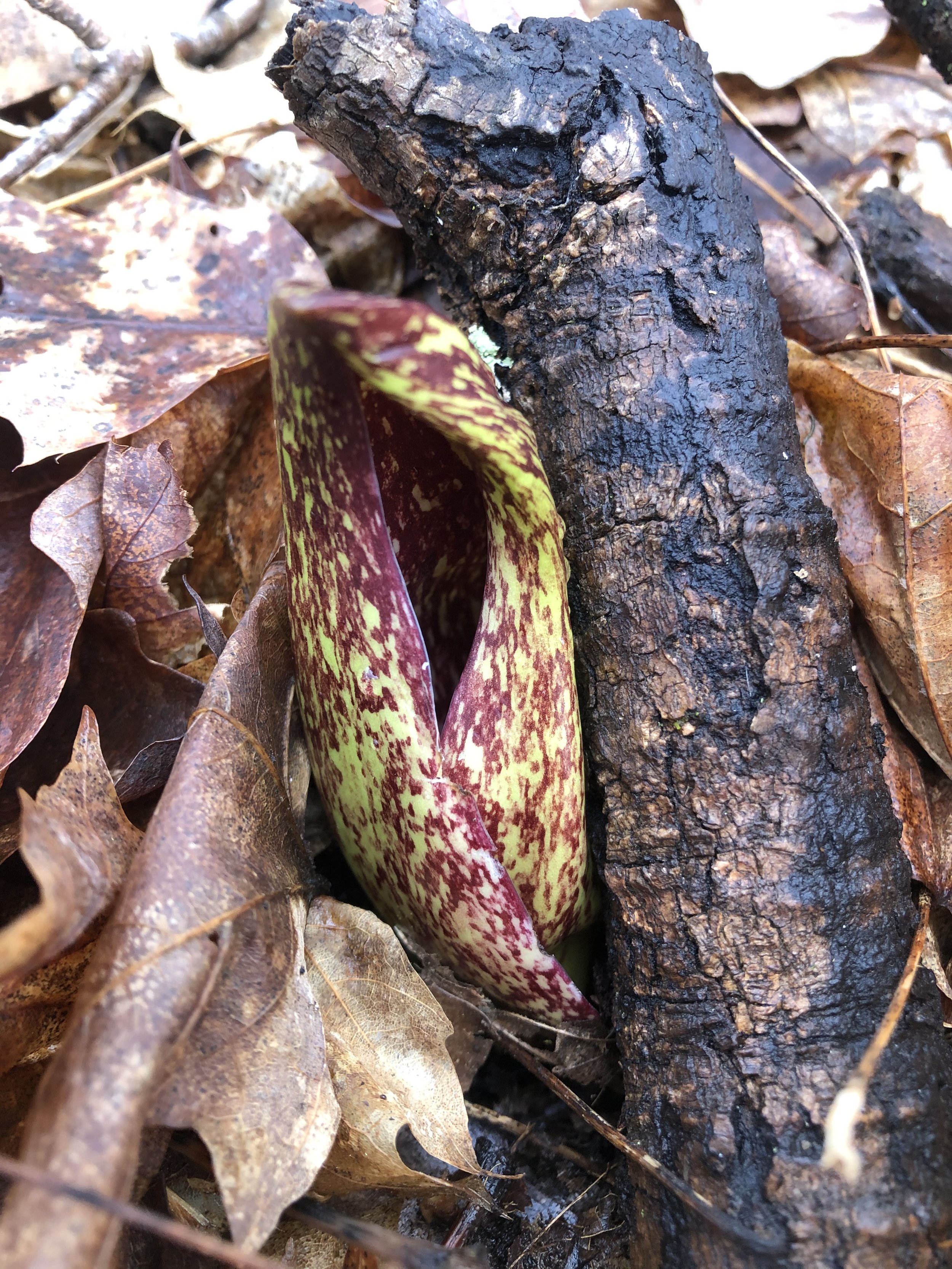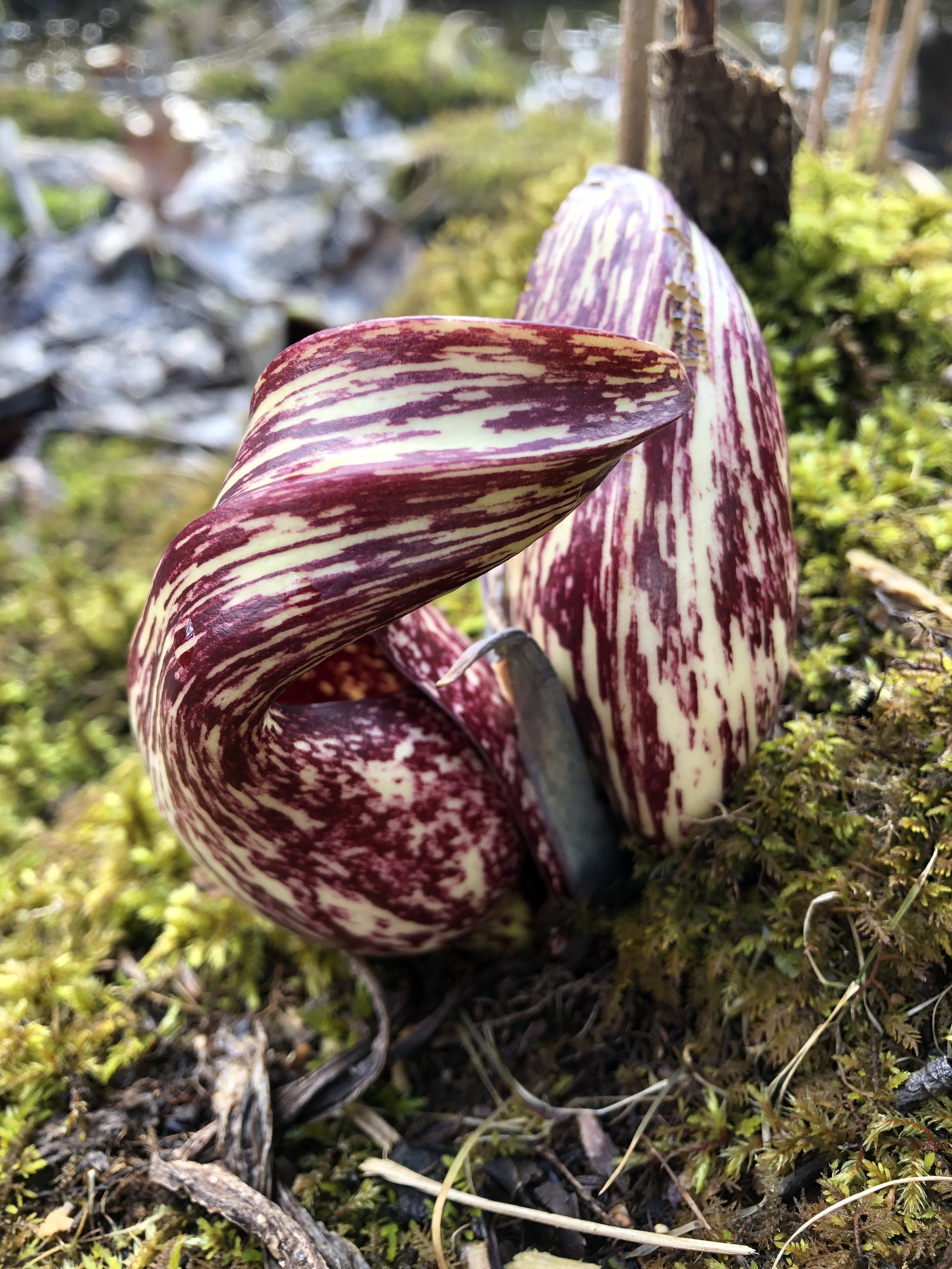Anatomy of a Skunk Cabbage
One of our first and weirdest wildflowers to emerge in springtime is the eery purple hooded bog dweller, Skunk Cabbage—Symplocarpus foetidus, in the Arum family: Araceae. These dark, ground growing blooms rise out early in damp places along creek beds, around ponds, in low wooded areas where water sits and in wetlands. They are truly one of our first herbaceous plants to return, sometimes even melting through the last layer of snow. Many view them as the true harbinger of spring here in the northeast. Skunk cabbages have a unique ability to generate heat, a rare feat in a plant, which allows it to get ahead of the rest of the spring wildflowers and be the first to bloom. And also how you’ll see it emerging through late-lasting ice and snow!
Botanically skunk cabbages are pretty unique, distinguished by their “spathe” and “spadix” structure, much like the plant’s close relative Jack-in-the-Pulpit, another regional Arum plant. These are the most conspicuous features of the plant, which don’t make it look a whole lot like a flower to most of us.
The spathe is a specialized bract—a type of leaf associated with flowers—that forms the thick smooth shiny hood-like fold we know so well. It grows in a range of colors from vibrant yellowish-green to mottled magenta to rich royal purple. The patterning on the spathe is incredibly beautiful and I really enjoy hunting down and taking photos of really beautiful ones I discover.
The spadix sits inside the spathe, a round bundle of many small flowers (an inflorescence) all joined together on a common receptacle. It looks like a fleshy pink ball, with many little segments. There are about 50-100 little flowers that make up the spadix—those are the segments. These flowers are bisexual, meaning they have both male—pollen-producing—and female—seed-producing—parts. The single pistil (female) emerges first from each flower, like a tiny stem, and then the stamen, which produce the bright yellow dusty pollen that sometimes gathers in the base of the spathe. The flowers don’t look explicitly like flowers with the typical ring of petals, and actually collectively look a bit like a microscopic virus than a blossom, but don’t be fooled—they are flowers and to many insects they are very attractive!
The smell of Skunk Cabbage is very distinct and part of how it gets both its common and botanical name. When crushed or broken the plant has a skunky, rotten smell to it and this, plus their warmth-producing quality, makes it a perfect place for pollinators to find solace and food in the brisk days of early spring. The species name, “foetidus,” refers to this smell as well—the “fetid” rotting animal smell that so distinguishes an early spring walk through the wetland, crushing a few leaf-hidden skunk cabbages underfoot along the way. The genus name, “Symplocarpus” basically means many fruits, which is what forms after the flowers have been pollinated—a many fruited bundle, much like that of Jack-in-the-Pulpit.
The leaves of skunk cabbage unfold after the flower, starting out as a little conical protuberance, then opening up like an umbrella into huge tropical-looking bright green leaves, more round than long. The leaves have some of that skunky smell to them too and really fill out the wetlands where they grow. Though the flowers disappear after spring, the leaves stick around through the summer, seemingly getting larger and larger!
The above images depict as best as possible all these funny little facets of this totally strange and alluring plant—one of my personal favourites and the true harbinger of spring around these parts. There is a different skunk cabbage out west, the western skunk cabbage, sometimes called the swamp lantern (a name I absolutely love!), but it is a bit different and actually in a totally different genus, yet still the Arum plant family. Calla lilies are another well-known spadix-spathe flower, along with Jack-in-the-pulpit, Dutchman’s pipe, and Calamus.
Now (March-early May) is certainly the time to go out and admire these wonky freak flowers, a treasured pastime after winter’s lack of exciting plant-life. See how many variations in colour you can find!
